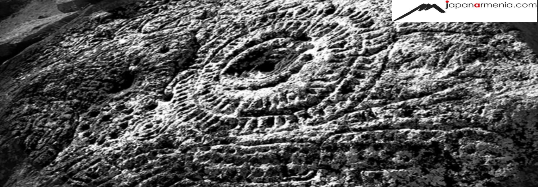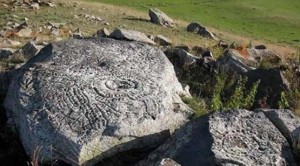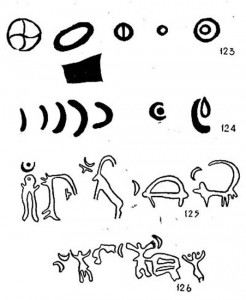
Celestial Maps of Gegham Mountain: The Unique Rock Art of Armenia
16 APRIL, 2016 – 15:02 LILIT MKHITARYAN
Celestial Maps of Gegham Mountain: The Unique Rock Art of Armenia
(Read the article on one page)
In the volcanic Gegham and Vardenis Mountains of Armenia, architect Suren Petrosyan discovered unique and mysterious astrological rock art paintings.
Experts have different opinions on the creation chronology of the rock art paintings found in the basin of Lake Sevan and along the slopes of Mount Aragats. Some think these rock art paintings were created in the third to second millennium BC, others claim about the fifth to fourth millennium BC, and there are researchers who date them to 10th millennium BC. It is not surprising, since the study and chronology of rock art paintings is very difficult.
The dramatic volcanic landscape of the Gegham Mountains, Armenia (MEDIACRAT, CC BY-SA 3.0 )
However, there is no doubt that these rock art paintings illustrating stellar maps have thousands of years’ history.
When you visit the mountains where these astrological paintings—some made with a natural paint made of red volcanic mineral, others carved into the rock—have been created, immediately you notice the wide skies which seem almost too close to the Earth. The starry sky is especially clear and bright, which inspires one to go back to the past and for a moment to appear beside our ancestors, and see how they saw.
And at a time when there were no magnifying devices, the fact that the Armenian Highland is high enough above sea level (1700 to 1800 meters, or 5577 to 5905 feet), and about 500 to 600 meters (1600 to 2000 feet) high from the neighboring countries, contributed to witnessing breathtaking clarity of the starry sky.
o Serpent Stones: The Vishap Steles of Armenia as a Symbol of Rock Art and Rich Heritage
o Research Decodes Ancient Celtic Astronomy Symbols and Links them to Jungian Archetypes
In this regard, great importance was placed on rock art paintings on the hill called “Sheikhi Chingil” in the Gegham mountains, and on the peak of Sevsar in Vardenis Mountains—the former above sea level about 3500 meters (11,482 feet), and the latter at about 300 meters (984 feet).
Celestial Rock Art
These rock art paintings differ from the rest of Armenian petroglyphs because they are exclusively dedicated to the worship of the heavenly bodies, including the sun, moon, planets, stars, and unusual compositions of figures. In these places even the so-called “ordinary” rock art paintings are inextricably linked to the starry sky.
Many Armenian scientists have studied these unique ancient astronomic centers and their stellar maps, but historian and archaeologist Harutyun Martirosyan came to conclusion that the ancestors of Armenians, while worshiping the heavenly bodies, recognized several important quantitative and qualitative patterns of the celestial world.
Accordingly, it is clear that the heavenly bodies that were carved into the rock were based on accurate observations, that thousands of years ago our ancestors have differentiated not only the sun and the moon, but also planets, stars, and constellations which were separated into respective images and symbols only in the third millennium BC.
Obviously, ancient man not only noticed, but also depicted the movement of the stars that helped them to clearly understand and mark day and night, and the passage of time—seasons, days, even hours. Our ancestors differentiated the long, medium and short days based on the movements of the near and distant stars and planets.
Thus, Armenians’ ancestors’ understanding of the night sky came from religious circles.
The Sun and Moon: Siblings in the Sky
If we look at the disks of the sun in our rock art paintings, then you see that they are portrayed differently: in varying positions, the disks of the sun portray the morning, noon and evening. The sun is depicted through four concentric circles according to its rotation.
Rock art at the Sevsar Astrological Observatory, Armenia. (Photo courtesy writer.)
Armenians’ ancestors believed that the sun and the moon are siblings. That’s why they often depicted the moon, like the sun, in the circle. However, unlike the sun, the moon was depicted with two concentric circles, that reflects two main stages of the moon.
Drawings detailing the rock art symbols (Image courtesy writer)
Following the sun, moon and stars movements, regularities, and their quantitative expressions, ancient Armenians generalized all these in numbers, studying count and arithmetic from nature.
So they gave the sun one point, the sun and the moon two points, the moon and the stars three points, five points they gave to the planets and added to the sun and the moon, it becomes seven points. And the number 7 occupies the main place in all initial calculations of man, especially since it exactly matches with the changes of the moon phases.
Thanks to Arsen Alvandyan for the provision of the material!
the material is taken from goo.gl/gwqsrB














